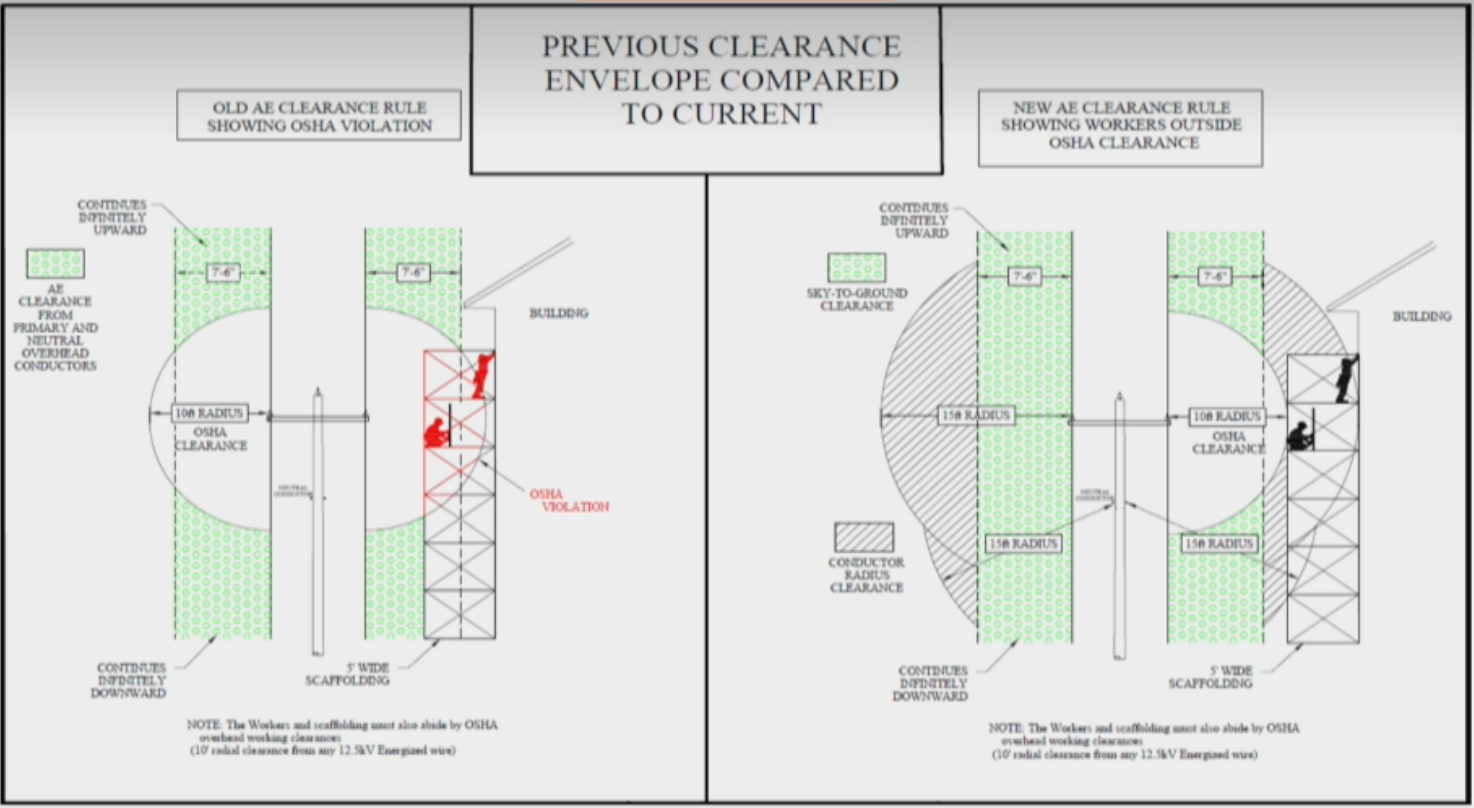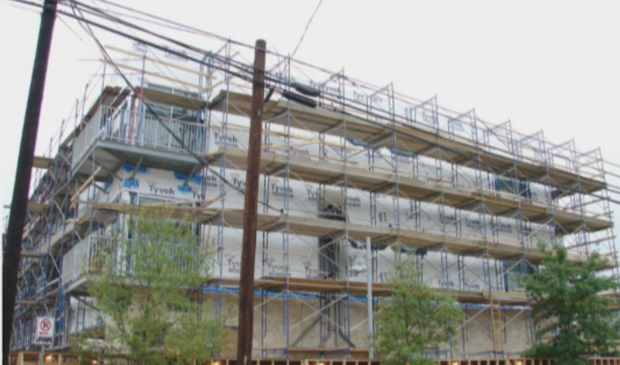A new Austin Energy rule aims to keep construction workers safe. It could also make homes harder to build.
Friday, August 27, 2021 by
Jonathan Lee In response to the death by electrocution of a construction worker and a subsequent lawsuit, Austin Energy has increased the minimum distance between power lines and new buildings, a regulation the utility says will keep workers safer.
A jury in 2019 found Austin Energy guilty of negligence in the death of Jaime Membreno, who was working on the exterior of the OK Corral nightclub. Membreno was electrocuted when metal construction material he was cutting came into contact with a power line, which was closer to the facade than allowed under the National Electric Safety Code. The city of Austin and other guilty parties were forced to pay a portion of the $9.3 million in total damages that the court awarded to the Membreno family.
The rule increases the distance between new buildings and distribution lines (the type of lines seen along many city and neighborhood streets) to at least 15 feet, a 5-foot increase over the previous rules, in order to decrease the risk of electrocution for construction workers.
The development community has fought the new regulation, arguing that it makes new homes harder to build. The Home Builders Association of Greater Austin appealed the decision only for City Manager Spencer Cronk to uphold the rule.
In order to better understand the disagreement between the utility and homebuilders, Planning commissioners requested a briefing from Austin Energy, which they heard Tuesday.
Austin Energy engineer Scott Bayer said the rule aims to avoid future incidents and litigation: “Legally, this is the way we need to ensure public safety.” The rule applies to all new construction, including accessory dwelling units, home expansions and minor work like new porches. Existing buildings will be grandfathered in.
“We’re still trying to work to make things easier for (homebuilders) to be able to do their work, yet keep an environment that protects workers,” Bayer said, telling commissioners that the utility has had many conversations with those in the development industry.
Bayer provided a diagram to help visualize the impact of the 15-foot buffer on new buildings. The National Electric Safety Code mandates a 7.5-foot buffer, and OSHA recommends 10 feet.

Diagrams by city of Austin.
On the whole, commissioners were sympathetic to complaints by developers, but stopped short of recommending the rule be overturned.
“We’re rendering these properties not re-developable,” Commissioner Jennifer Mushtaler said. “But I still want to protect safety.”
Drawing on conversations with architects, Commissioner Grayson Cox argued that the rule could hurt new ADU construction in particular. “I heard from one architect that this rule change came about in the middle of getting an ADU designed and permitted, and now basically their project can’t happen,” Cox said.
Commissioner Solveij Rosa Praxis, on the other hand, praised the rule as a win for workers’ rights and did not comment on the impact to development: “I really appreciate that changes are being made after workers lost their lives. It’s kind of rare that you see something like that happen, and I’ve met undocumented construction workers who’ve suffered electrocution.”
When asked whether the rule is on par with what other utilities require, Bayer said that, while he has done “internet searches” to figure that out, the results are incomplete. Many utilities do not publish minimum clearance distances for distribution lines. Austin Energy has sent a survey to other Texas utilities to get more complete information.
Bayer also said that the utility has not kept track of how many other similar injuries or deaths have occurred. “We don’t keep records of that,” Bayer said in response to a question by Commissioner Awais Azhar about the scope of the problem. “We’d have to do some research to get that information.”
There could be possible workarounds to the rule, including using taller poles or different kinds of poles that don’t have the typical T-shape. These solutions could prove complicated and expensive, particularly for small builders and people renovating their homes.
The commission may take up the issue again when more information about industry best practices become available. At that point, it could make a recommendation to City Council about keeping or changing the rule.
The Austin Monitor’s work is made possible by donations from the community. Though our reporting covers donors from time to time, we are careful to keep business and editorial efforts separate while maintaining transparency. A complete list of donors is available here, and our code of ethics is explained here.
You're a community leader
And we’re honored you look to us for serious, in-depth news. You know a strong community needs local and dedicated watchdog reporting. We’re here for you and that won’t change. Now will you take the powerful next step and support our nonprofit news organization?











